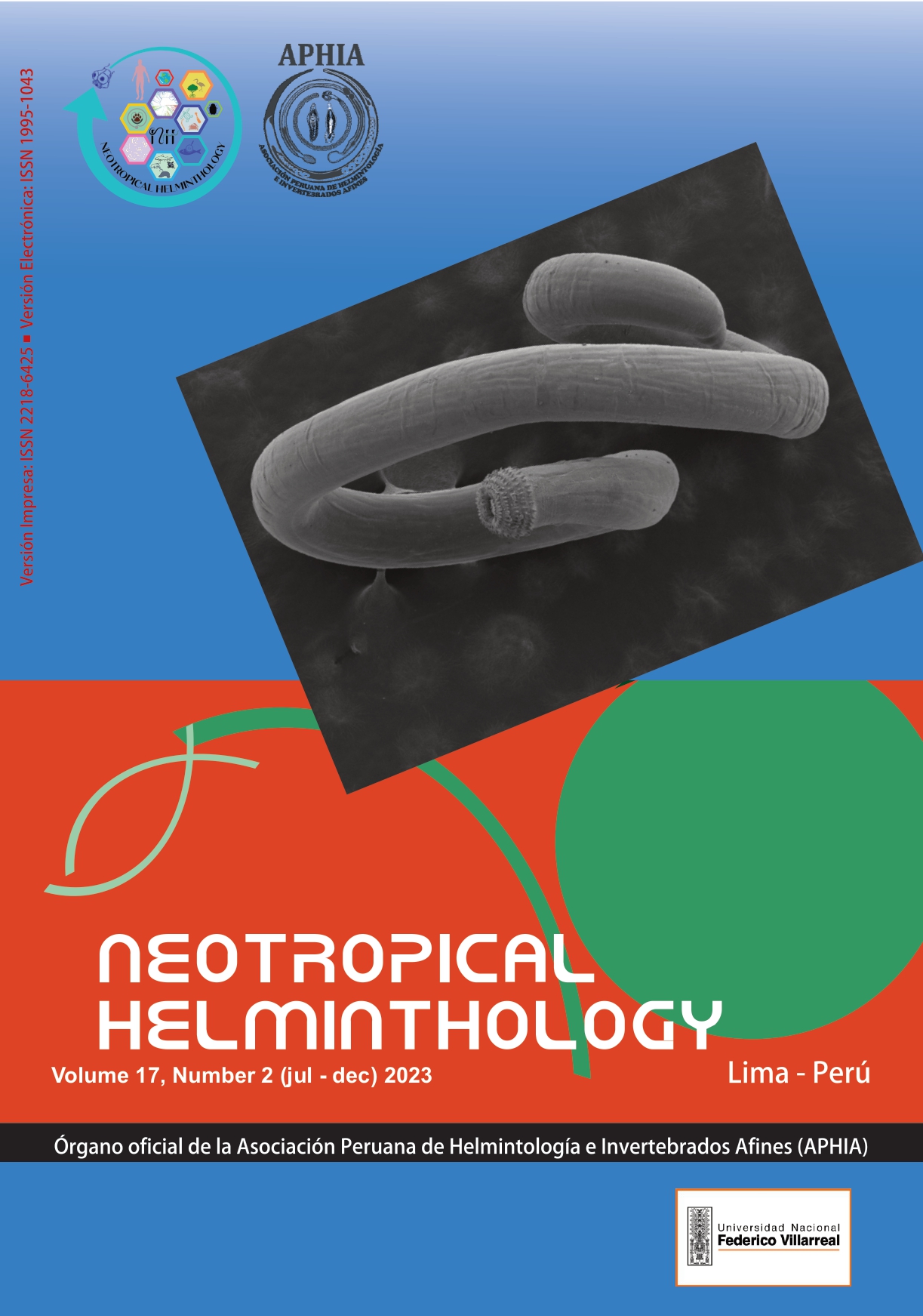Subcutaneous Strigea sp. (Diplostomoidea: Strigeidae) metacercariae in Rallidae (Gruiformes) from the neotropical region
DOI:
https://doi.org/10.24039/rnh20231721694Keywords:
Digenea, Pardirallus maculatus, Pardirallus sanguinolentus, plumbeous rail, spotted railAbstract
The life cycle of species belonging to Strigea remains complex and poorly understood, especially in the Neotropical region, where information about their intermediate hosts is scarce. Rallidae birds are known for their adaptability to aquatic and semi-aquatic environments since they exhibit ability to disperse and adjust to a wide range of ecological conditions. In this study, we examined seventeen specimens of Pardirallus maculatus (Boddaert, 1783) and one of Pardirallus sanguinolentus (Swainson, 1838) collected in southern Brazil in search for Strigea sp. metacercariae. Metacercariae occurred in 11.1% (2/18) of birds with infection intensity of 12 (Strigea sp. 2) and 28 (Strigea sp. 1) helminths found in P. sanguinolentus and P. maculatus, respectively. Metacercariae were found exclusively in the pectoralis muscle region, beneath subcutaneous tissue. These findings suggest the potential that Rallidae birds have to act as intermediate hosts of Strigea sp. in that region. They are reinforced by previous observation of small aquatic birds which were identified as prey of Falconiformes (definitive hosts). Thus, our study provides novel information that may assist further research that aims at expanding our understanding of the life cycle of Strigea sp. and at enhancing our knowledge of biodiversity by revealing new geographic distribution and intermediate hosts.
Downloads
Published
How to Cite
Issue
Section
License

This work is licensed under a Creative Commons Attribution-NonCommercial-NoDerivatives 4.0 International License.
OBJETO: El AUTOR-CEDENTE transfiere de manera TOTAL Y SIN LIMITACIÓN alguna al CESIONARIO los derechos patrimoniales que le corresponden sobre la (s) obra(s) tituladas: xxxxxxxxxxxxxxxx, por el tiempo que establezca la ley internacional. En virtud de lo anterior, se entiende que el CESIONARIO adquiere el derecho de reproducción en todas sus modalidades, incluso para inclusión audiovisual; el derecho de transformación o adaptación, comunicación pública, traducción, distribución y, en general, cualquier tipo de explotación que de las obras se pueda realizar por cualquier medio conocido o por conocer en el territorio nacional o internacional.
REMUNERACIÓN: La cesión de los derechos patrimoniales de autor que mediante este contrato se hace será a título gratuito.
CONDICIONES Y LEGITIMIDAD DE LOS DERECHOS: El AUTOR-CEDENTE garantiza que es propietario integral de los derechos de explotación de la(s) obra(s) y en consecuencia garantiza que puede contratar y transferir los derechos aquí cedidos sin ningún tipo de limitación por no tener ningún tipo de gravamen, limitación o disposición. En todo caso, responderá por cualquier reclamo que en materia de derecho de autor se pueda presentar, exonerando de cualquier responsabilidad al CESIONARIO.
LICENCIA DE ACCESO ABIERTO: El AUTOR-CEDENTE autoriza que manuscrito publicado en La Revista Neotropical Helminthology permanece disponible para su consulta pública en el sitio web https://www.neotropicalhelminthology.com/ y en los diferentes sistemas de indexación y bases de datos en las que la revista tiene visibilidad, bajo la licencia Creative Commons, en la modalidad Reconocimiento-No comercial- Sin Trabajos derivados –aprobada en Perú, y por lo tanto son de acceso abierto. De ahí que los autores dan, sin derecho a retribución económica, a la Asociación Peruana de Helmintología e Invertebrados Afines (APHIA), los derechos de autor para la edición y reproducción a través de diferentes medios de difusión.


 Numero 2 Volumen 19 - 2025 (versión Anticipada)
Numero 2 Volumen 19 - 2025 (versión Anticipada)














































